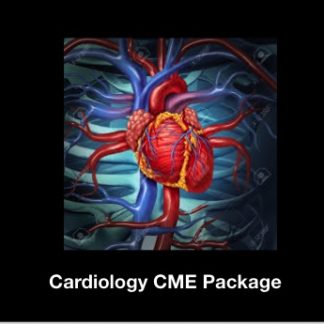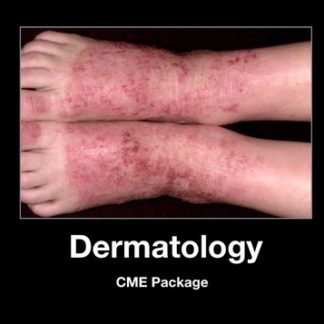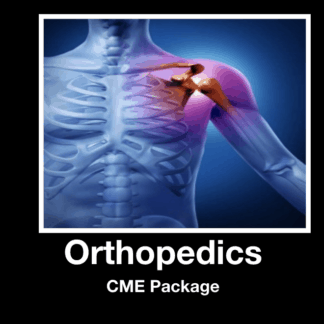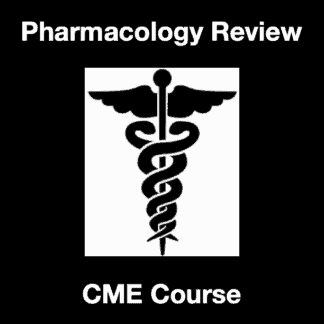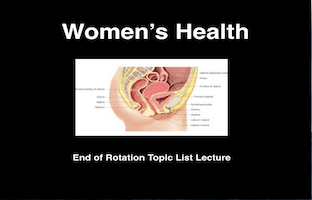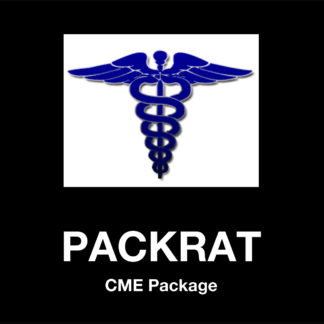Description
Women’s Health Blueprint EOR (End of Rotation) Review
This is a review of the Women’s Health PAEA End of Rotation Blueprint. This section presents content over each topic as well as lecture video (1 hour and 36 minutes). There is also 120 multiple choice questions practice test over the Women’s Health EOR Blueprint, as well as detailed answers and explanations on each question. The lecture slides are also included. Purchase of this section will give you access for 30 months.
We do offer category 2 CME with Amazon and Apple Gift Cards. Click here if interested in CME with Amazon and Apple Gift Card
This is in a mobile friendly form.
Sample Questions:
Women’s Health
End of Rotation Questions
Question 1
1. Which of the following lab studies best demonstrates menopause findings:
A. High estradiol and low FSH and LH
B. Low estradiol and high FSH and LH
C. High estradiol and high FSH and LH
D. Low estradiol and low FSH and LH
Answer 1
1. Choice B is the correct answer. High FSH and LH and low estradiol is to be expected. The FSH and LH are high because the negative feedback systems from the hypothalamic pituitary axis cannot be shut off because the ovaries “stopped working.” The estradiol is simply not produced enough to signal the anterior pituitary to quit producing FSH and LH.
Question 2
2. Your patient is a 24 year old female 31 weeks pregnant with preeclampsia in the ER with headache, dizziness and vomiting. Her blood pressure is 235/130 and heart rate is 88. Which of the following is not appropriate for management of her elevated blood pressure emergently?
A. Hydralazine
B. Labetalol
C. Methyldopa
D. Nitroprusside
Answer 2
2. Choice D is the correct answer. Nitroprusside is not ideal for preeclampsia patients. It is actually pregnancy category C, but hydralazine, labetalol, and methyldopa are more safe. In addition, there is a cyanide toxicity risk even at low infusion rates.
Question 3
3. A 36-year-old woman has noted a mass in the right breast that has remained unchanged through three menstrual periods. She has a history of smaller benign cystic disease. Examination confirms its presence. Which of the following is the MOST appropriate next step?
Reassurance
Excisional biopsy
Recheck in 3 months
CT scan of the breast
Aspiration of dominant mass
Answer 3
3. Choice E is the correct answer. This patient should have aspiration of the dominant mass.
Question 4
4. A 28 year-old female complains of an inability to get pregnant over the past year and she is also concerned about the growth of dark hair along her jawline and chin. Her last menstrual period was 6 months ago. She is 68 inches tall and weighs 235 pounds. Her blood pressure is 134/88 and her pulse is 80 beats per minute. She has several dark, coarse hairs on her chin and jawline.
Which one of the following is the MOST LIKELY etiology for this patient’s signs and symptoms?
Increased activity of 21-hydroxylase
A hypothalamic tumor
Polycystic ovaries
Diabetes mellitus
Addison’s disease
Answer 4
4. Choice C is the correct answer. This patient’s symptoms are likely due to polycystic ovaries.
Question 5
5. A 34-year-old obese G2P2 complains of no menstrual cycle for the past 3 months. The initial evaluation revealed a negative pregnancy test, normal prolactin, TSH, FSH, LH, renal panel and liver panel. Physical exam is normal to include no evidence of hirsutism. The next appropriate step to evaluate this patient is to:
Order a head MRI
Order a pelvic MRI
Start Estrogen 0.625 mg daily for 10 days
Start Estrogen 1.25 mg daily for 10 days
Start Progesterone 10 mg daily for 10 days
Answer 5
5. Choice E is the correct answer. This patient should have a burst of Progesterone for 10 days.
Question 6
6. A 40-year-old female presents to the clinic with complaint of a left breast mass. It has persisted for 2 menstrual cycles and is palpable on exam in clinic. A mammogram was performed which was normal. The next step in management for this patient is:
Reassurance
Repeat mammogram in 3 months
Repeat mammogram in 6 months
Ultrasound
Referral for surgical biopsy
Answer 6
6. Choice E is the correct answer. This patient needs referral for a surgical biopsy.
Question 7
7. Which of the following is best described by hard, immobile, irregularly shaped solitary mass, positive lymphadenopathy.
Atypical ductal hyperplasia
Fibrocystic breast disorder
Breast carcinoma
Fibroadenoma
Mastitis
Answer 7
7. Choice C is the correct answer. Breast carcinoma is best described by theses physical findings.
Question 8
8. Which of the following patients would be less like to develop ectopic pregnancy?
A. Patient with pelvic inflammatory disease
B. Patient with ovarian cysts
C. Patients that are on Clomid
D. Patient with history of previous ectopic pregnancy
Answer 8
8. Choice B is the correct answer. PID, infertility treatments, and history of ectopic pregnancy are well defined risk factors for ectopic pregnancy. Ovarian cysts are not a risk factor for ectopic pregnancy.
Question 9
9. Which of the following is true regarding the signs and symptoms of ovarian torsion?
A. The pain may come and go
B. Usually a sudden onset of unilateral pelvic pain
C. Untreated torsion may lead to peritonitis
D. All of the above
Answer 9
9. Choice D is the correct answer. The pain may be intermittent and present as unilateral pelvic pain. Untreated torsion can lead to peritonitis. In addition, up to two thirds of patients will have associated nausea and vomiting.
Question 10
10. Your patient is a 24 year old female who is approximately 34 weeks pregnant with left flank pain. Her urinalysis shows gross blood and no white cells. You are interested in confirming the presence of kidney stones because she had to have surgical intervention with them in the past with previous pregnancies. Which radiographic modality is the best test to order?
A. KUB
B. CT abdomen and pelvis without contrast
C. Renal Ultrasound
D. MRI of abdomen and pelvis without contrast
Answer 10
10. Choice C is the correct answer. Renal ultrasound is the modality of choice. It has the lowest exposure to radiation, and highest yield. It is important to note you do not actually see the kidney stone, but you will see the associated hydronephrosis and ureteral dilation. CT scan of abdomen and pelvis without contrast in the non pregnant patient is the ideal test, but is too much radiation exposure when other tests are available. KUB will have some minimal radiation, but will be low yield. MRI of the Abdomen and Pelvis is not an ideal modality because of cost and will have virtually no radiation exposure.
